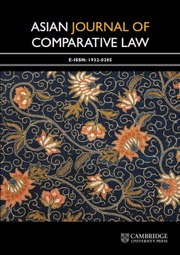This work is the second stage of a project undertaken by the Asian Business Law Institute (ABLI) to encourage the harmonisation of the recognition and enforcement of foreign judgments in the ten ASEAN Member States as well as Australia, China, India, Japan and South Korea. The first stage of the project was to produce a concise summary of the relevant law by legal experts from each of these fifteen countries. The second stage is an ambitious attempt to find commonality between these diverse jurisdictions and create thirteen core principles, which in the words of the Project Leader, Professor Adeline Chong, ‘will provide fodder for the harmonisation of the foreign judgment rules in Asia.’ Professor Chong stresses that these principles do not set out a model law. Nevertheless, ‘by analysing how the countries in Asia approach specific issues and teasing out the similarities and differences between the various laws, it is hoped that they will provide a useful resource for judges, practitioners, legislators and policymakers in Asia.’
To find commonality is no easy task, given that some of the countries in the project are common law jurisdictions, others civil and some have hybrid systems while Indonesia and Thailand do not recognise or enforce any foreign judgments. The approach adopted by the book (very much like the classic common law work Dicey, Morris & Collins on the Conflict of Laws) is that, at the start of each section, a principle is stated and then a commentary on the principle follows. The commentary details to what degree each country within the project complies with the principle, and ends with a ‘suggested way forward’ which seeks to justify why the principle should form part of Asian law.
To a common law lawyer, like this reviewer, there is nothing particularly controversial about eleven of these principles: Principle 1 (restriction on enforcement to commercial matters); Principle 2 (international jurisdiction – the need for presence or submission); Principle 3 (finality); Principle 4 (no review of the merits); Principle 6 (no enforcement of a foreign penal or tax law); Principles 8–10 (the standard defences to enforcement, namely fraud, public policy and lack of due process); Principle 11 (inconsistent judgments and lis pendens); Principle 12 (enforcement of in rem judgments); and Principle 13 (severability of objectionable parts of a judgment).
The more controversial principles are Principle 5 (enforcement on the grounds of reciprocity) and Principle 7 (enforcement of a non-money judgment). Regarding the former, the inclusion of reciprocity as a principle would seem difficult to justify, given the criticisms correctly identified in the commentary that it ‘can encourage unnecessary protectionism and a waste of judicial resources’ (p 59). In fact, the authors conclude that ‘[a] cogent case could be made for the abolition of reciprocity as a pre-condition’ (p 76). This principle seems to have been included simply on the basis that it is recognised by most of the countries within the scope of the project even though there is no consensus on the type of reciprocity required. If one is recommending countries to adopt principles, they surely should be good principles – a fact the authors recognise themselves in their conclusion (p 76).
Regarding Principle 7 (enforcement of a non-money judgment), as compared to their conclusions on Principle 5 (enforcement on the grounds of reciprocity), the authors this time place emphasis on what is the best principle to adopt, and recommend the enforcement of non-money judgments that are not provisional, provided the order is clear and there is an analogous remedy in the enforcement jurisdiction. This reflects the approach of the majority of Asian countries and is in line with the growing international trend to enforce such judgments (eg, Hague Choice of Court Agreements Convention; Hague Recognition and Enforcement of Foreign Judgments Convention).
As regards Principle 2 (international jurisdiction), it is somewhat surprising to see the principle includes the common law ‘presence test’ as a criterion, given the fact that the worldwide trend is to move away from this connection.Footnote 1 Indeed, very few Asian countries use this as a test, since the connection between the defendant and the jurisdiction may be very tenuous.
The main contribution of this book is to give the reader a very clear, concise and readable comparison as to the different approaches taken to enforcement in the fifteen countries covered by the project. The authors pitch the tone at just the right level, without being too simplistic nor too complex. The book will be of particular benefit to practitioners and judges involved in cross-border disputes in the Asian region, assisting them in anticipating enforcement in a foreign jurisdiction, and as reminder of the still significant differences between legal systems. It is so easy to get into a rut of believing that foreign law is not too dissimilar to one's own. The book reveals many surprising facts. For instance, the Philippines has no rules preventing the enforcement of the revenue or penal laws of a foreign country; in deciding whether to enforce a judgment, the Philippines does not apply its own international jurisdiction rules but those of the court of origin.
As regards the more ambitious objective of the project – that is, influencing governments in the region to harmonise their laws – regrettably one must take a pessimistic view. The history of harmonisation is one of great reluctance by countries to actually do so. The 2005 Hague Choice of Courts Agreement Convention has only been ratified by the European Union countries, Mexico, Montenegro, the United Kingdom, and one Asian country, Singapore. The 2019 Hague Recognition and Enforcement of Foreign Judgments Convention is still not in force. Countries within the project seem to prefer to negotiate bilateral enforcement treaties. China, for example, has thirty-five such treaties in place, two involving countries within the ABLI study – Lao PDR and Vietnam – while Vietnam has sixteen such treaties, including with Cambodia, China and Lao PDR. Where is the political will for a treaty involving fifteen countries?


